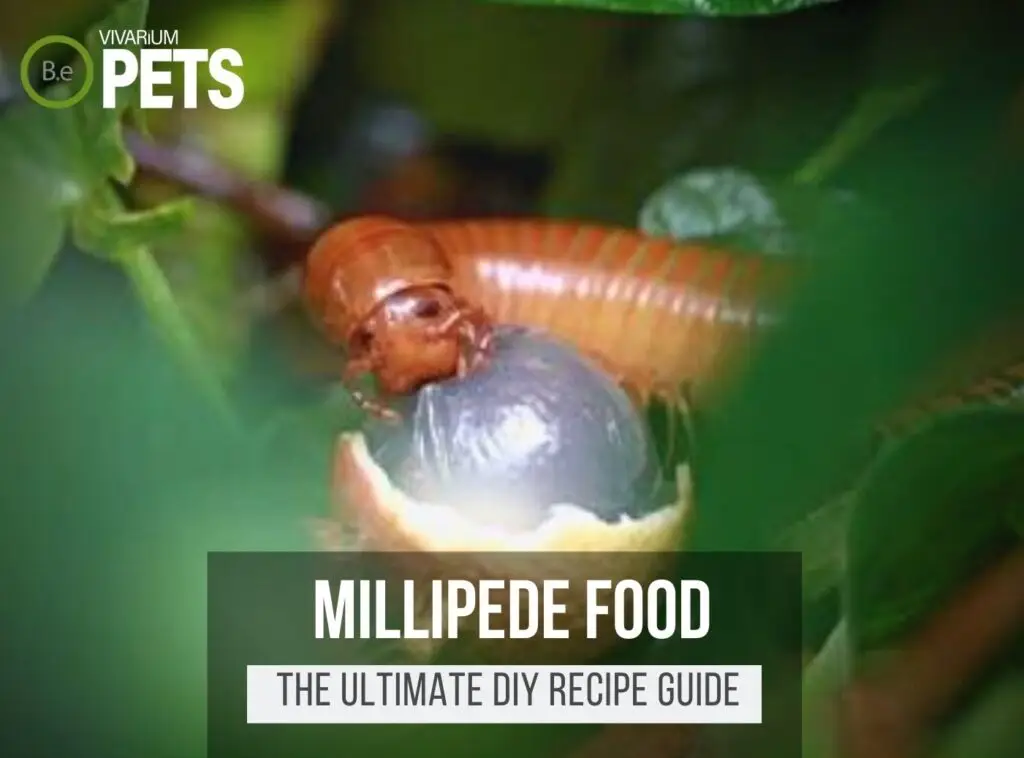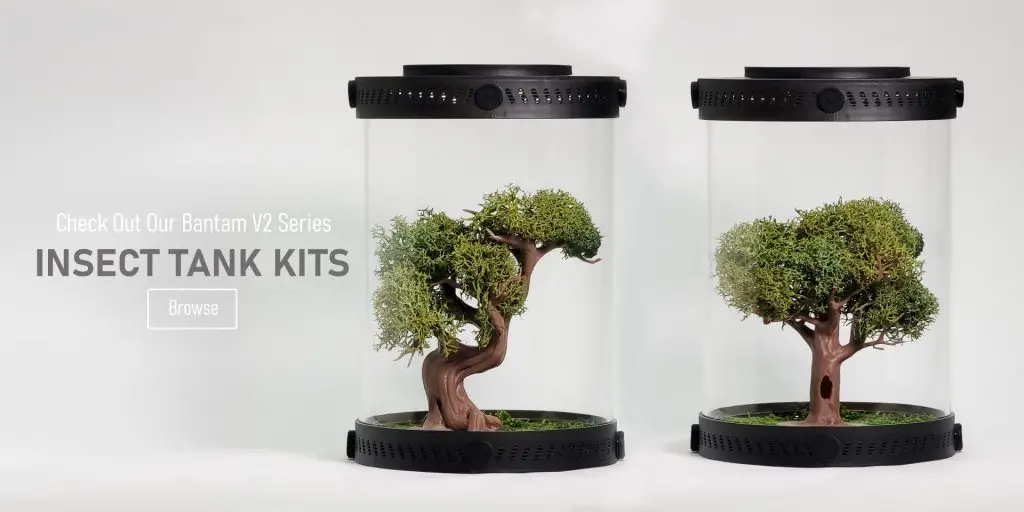The Giant Fire Millipede (Pelmatojulus excisus) is a fascinating species of arthropod!
These exotic creatures offer both fun and challenge when kept as pets.
For those who want to learn more about managing and caring for this Giant Millipede, this guide provides an informative overview to get you started.
Read on to discover how you can create a suitable, safe environment for your new pet.
| Characteristics: | |
|---|---|
| Common Name | Giant Fire Millipede |
| Family Name | Pachybolidae |
| Scientific Name | Pelmatojulus excisus |
| Use | Cleaning, Aerating Soil, Pets |
| Temperament | Non-aggressive |
| Lifespan | 7-10 Years |
| Diet | Detritivore |
| Adult Size | 17 cm |
| Breeding Type | Egg Layer |
| Care Level | Easy |
| Minimum Tank Size | 10-15 Gallons |
| pH | 5.5 to 7.5 |
| Hardness | Soft |
| Temperature | 60-75°F |
Table Of Contents:
ToggleWhat Are Giant Fire Millipedes?
Pelmatojulus excisus are part of the family Pachybolidae, and they are commonly known as the Giant Fire Millipedes.
They are considered to be a living fossil, believed to have been around since the Triassic period.
These give off a heat-sensitive alkaloid as a defense mechanism when threatened – hence the name “giant fire millipede”.
Create an ideal habitat for your millipede with our Customizable Millipede Enclosure Kits, which include everything you need to get started.
What Do Giant Fire Millipedes Look Like?
Giant Fire Millipedes are a distinctive species of millipedes that can grow to be more than six inches long.
Despite their long length, they are quite thin, with a cylindrical body that has many segments.
Their color ranges from light to dark brown, which is sometimes briefly punctuated with bright orange or red stripes.
They have two long antennae, and their many legs typically carry the same color hue as the bright stripes along their backside.
Benefits Of Using Giant Fire Millipede
Pelmatojulus excisus can make unique and interesting additions to many types of vivariums.
Not only are they low maintenance, but they also help to keep the tank environment clean and healthy.
They love to munch on decomposing material, helping to reduce food waste and keep the enclosure free from detritus.
Furthermore, they can help regulate the humidity levels in the tank, and their bright colors can add a beautiful, living touch to your mini-ecosystem.


Giant Fire Millipede Facts
Giant Fire Millipedes have a shiny red-orange exoskeleton and can live for up to 10 years if provided the proper care.
Their natural diet consists of decaying plant matter and small insects, and they are known for their calm demeanor.
Breeding is possible for this species and can be achieved with the right temperature and humidity conditions.
Habitat
Pelmatojulus excisus are arthropod species native to Central and West Africa.
They inhabit tropical rainforest locations, where they hide under trees, logs, and leaf litter to stay safe from predators.
During the day they prefer dark, humid places, while at night they are known to come out in search of food.
Replicate their natural habitat perfectly with our Bioactive Millipede Substrate Blend, designed to provide the ideal moisture and organic content for your millipedes.
Diet
In their natural environment, Giant Fire Millipede feed on decaying plant and wood material, such as leaf litter, tree bark, and wood fragments.
Pelmatojulus excusus are scavengers, so they will eat almost any type of food that is available to them.
Temperament
Giant Fire Millipede can make great pets, but they do need special care to keep them healthy and happy.
These creatures are relatively docile around humans and other animals and can be quite shy when first handled.
It is important to be gentle when interacting with them.
In general, Pelmatojulus excusus can be somewhat timid and may curl up tightly or move away if startled.
They are happiest when kept alone or in small groups, and may become aggressive with other millipedes if overcrowded.
During the day, they may remain motionless as they hide in their burrows or hideaways.
Lifespan
Pelmatojulus excisus generally lives between five to six years, but in some cases may live as long as seven to ten.
A fascinating species of arthropod, they go through several life stages to reach maturity.
First, they start as eggs, usually laid in damp environments with plenty of food.
These eggs hatch into tiny millipedes, which may take up to several months to transform into adults.
Once an adult, these millipedes can reach lengths of up to six inches and acquire bright orange and red coloration.
Breeding
Mating and reproducing are closely linked for the Giant Fire Millipede, as the males need to fertilize the female’s eggs to create a new generation.
The males can often be identified by their longer antennae and larger size, while the females are usually identified by the number of oviducts that are present on their sides.
The female will typically lay her eggs in damp soil or mulch, or even in the substrate of the pet enclosure.
Once they’re laid and fertilized, the eggs will remain in the soil for a few weeks and will eventually hatch.
Proper maintenance of the enclosure and providing the millipedes with the right substrate, diet, and temperature can all help to ensure successful breeding.
Where To Find Giant Fire Millipede
If you are looking for Pelmatojulus excisus in the wild, they are typically found in North Africa and the Middle East.
Generally, they inhabit dry, warm climates and live in areas with plenty of hiding places, such as fallen logs and rocks.
When foraging for food, they prefer to be by or near rotting wood and dead trees.
Giant Fire Millipedes can also be purchased from pet stores or specialized arthropod suppliers.
Do your research to make sure that any supplier you use is reputable and with a good history of providing healthy stock.
When selecting a giant fire millipede, make sure the specimen is active, has a clean body, and is not displaying any signs of illness.
Giant Fire Millipede Care
Caring for Giant Fire Millipede involves providing a pet-friendly enclosure with the right temperature and humidity, a varied and nutritious diet, and health care if needed.
Breeding requires separating males and females, placing eggs in a suitable egg-laying environment, and handling all animals with care.
Tank Requirements
The ideal tank for a Pelmatojulus excisus should be a deep terrarium or paludarium with a minimum size of at least 10 gallons for a single specimen.
A deeper setup allows for several layers of proper terrarium soil and multiple plants, which create a more naturalistic environment.
The ideal pH should be between 6.5 and 7.5, with a hardness of 200 parts per million.
To keep temperatures consistent and humid, the terrarium should be kept between 80°F and 90°F, with a humidity level of between 75% and 85%.
As for substrate, a thick layer of organic coco fiber soil and peat moss should be used to create a comforting base for your pet.
Additionally, both UVB and UVA lighting are beneficial for their health and well-being, along with live terrarium plants to provide a naturalistic setting.
What Do Giant Fire Millipedes Eat?
Feeding Pelmatojulus excisus is an important part of its health and well-being.
They prefer mild and softer foods, so it’s best to provide them with a variety of nutritious options.
Here are some food items that Giant Fire Millipede like to eat:
- Carrots, sweet potatoes, and other vegetables
- Fruit pieces, such as apples and bananas
- Leafy greens, such as collard greens
- A mix of protein-rich mealworms, crickets, and other similar insects
It’s also a good idea to have a shallow water dish in their enclosure for them to drink from.
Make sure to replace their water bowl daily to keep them clean and hydrated.
If you’re more of an avid hobbyist like myself, check out my ultimate DIY Millipede food guide. I explain the best foods and my favorite recipe in more depth.
Best Tankmates For Giant Fire Millipede
When choosing tankmates for a Giant Fire Millipede, it is important to select animals that share similar environmental requirements and that can peacefully coexist in the same habitat.
Suitable tankmates for the Giant Fire Millipede include other millipedes, such as the Giant African Millipede.
These animals are great companions for Giant Fire Millipedes as they require the same environmental conditions and have the same nocturnal habits.
Other suitable tankmates include the common pet isopods, springtails, and snails.
Additionally, smaller, aggressive tankmates, such as certain species of spiders, may cause stress and provoke territorial behavior.
As with any tankmate, it is important to research their specific needs and research whether they can peacefully cohabitate before adding them to the tank.
Conclusion
In conclusion, Pelmatojulus excisus can make for exciting and rewarding pet millipedes.
With the proper care, these animals can thrive in captivity and offer their keeper hours of entertainment and joy.
By understanding their requirements for an enclosure, temperature/humidity levels, diet, habitat for breeding, and health care, you can provide a happy and healthy home for your pet.
With the help of this guide, you can begin your journey as a Giant Fire Millipede keeper with confidence.
Create the ideal habitat for your millipedes with our species-specific soil mixes and Insect Enclosure Kits. These products provide everything you need for a successful and thriving millipede colony.
Frequently Asked Questions
To care for Pelmatojulus excisus, you need to provide a humid terrarium with a moist substrate, maintain a temperature range of 60-75°F, offer a varied detritivorous diet, and clean the terrarium regularly.
Handling should be minimized, and access to clean water should be provided at all times.
Giant fire millipedes are capable of producing a toxic compound that can cause skin irritation, and in some cases, can cause a mild toxic reaction.
However, they are not considered dangerous or lethal to humans.
Giant fire millipedes can grow up to 33 centimeters long, and their size can vary depending on their age, sex, and environmental factors such as diet and temperature.
Giant fire millipedes have a lifespan of around 7-10 years in captivity, but their lifespan in the wild is unknown.
The lifespan can vary depending on various factors such as diet, temperature, and environmental conditions.





